By Robert Tate, Automotive Historian and Researcher
Images Courtesy of the Robert Tate Collection
Published 4.1.2020
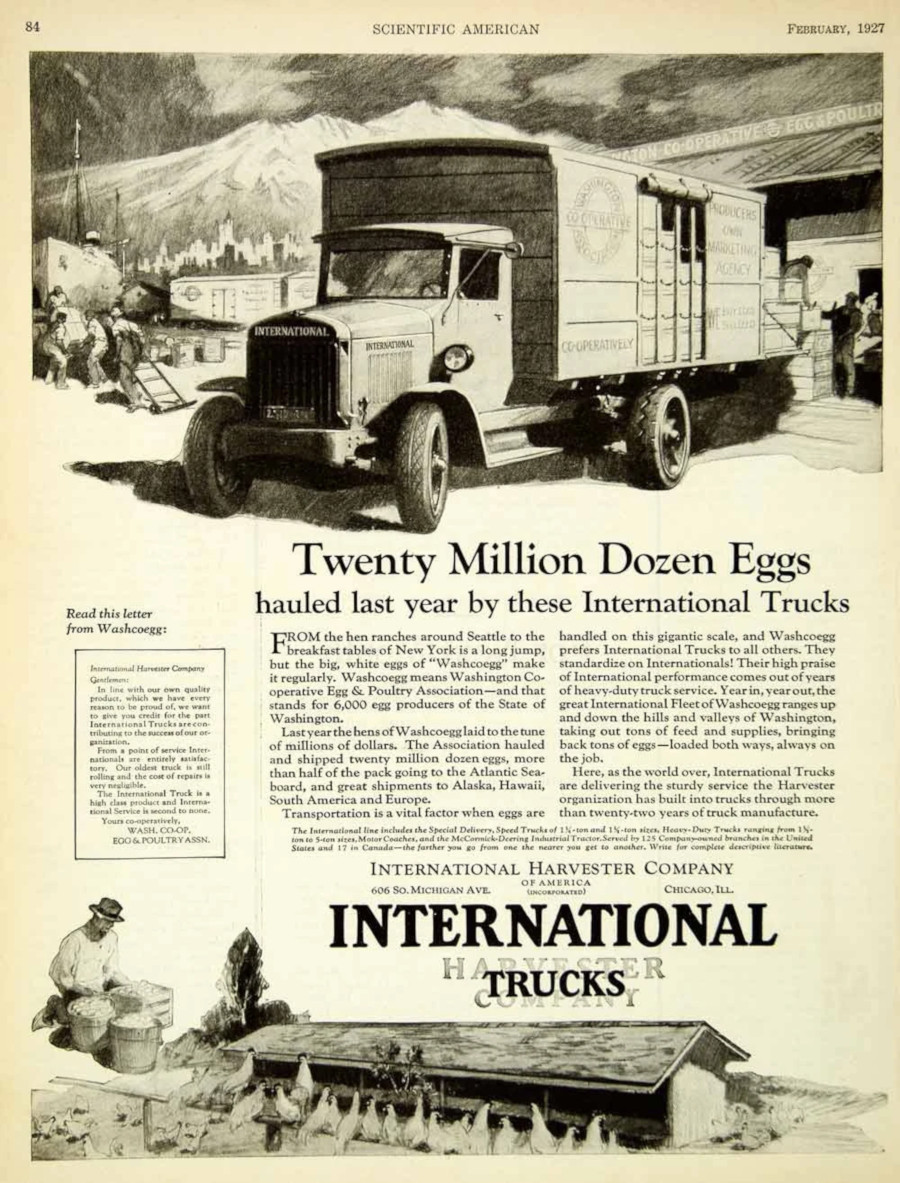 International Trucks advertisement 1927 (Robert Tate Collection)
International Trucks advertisement 1927 (Robert Tate Collection)
The McCormick Harvesting Machine Company and the Deering Harvester Company both started during the 1800s and became key parts of the American farming industry. The two companies merged in 1902, and International Harvester was formed.
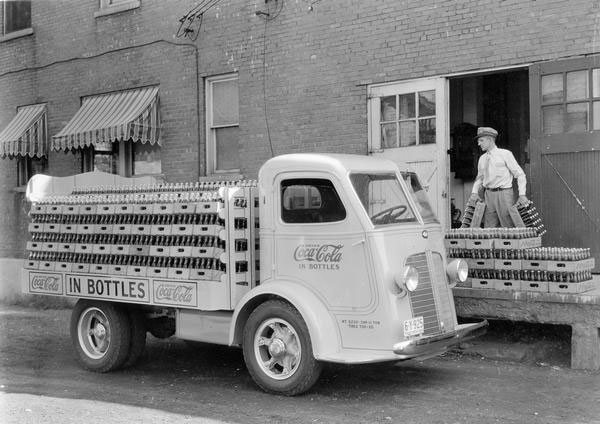 Coca Cola delivery truck (Coca Cola)
Coca Cola delivery truck (Coca Cola)
The first International engine-driven farm tractor was manufactured in 1906, and the first engine-driven truck was introduced the next year. The author of “International Trucks,” Frederick W. Crismon, said, “The first motor truck was known as the Auto Buggy, the newcomer was adaptable as either a passenger vehicle or, when the back seat was removed, as a light truck. It found quick acceptance among farmers.”
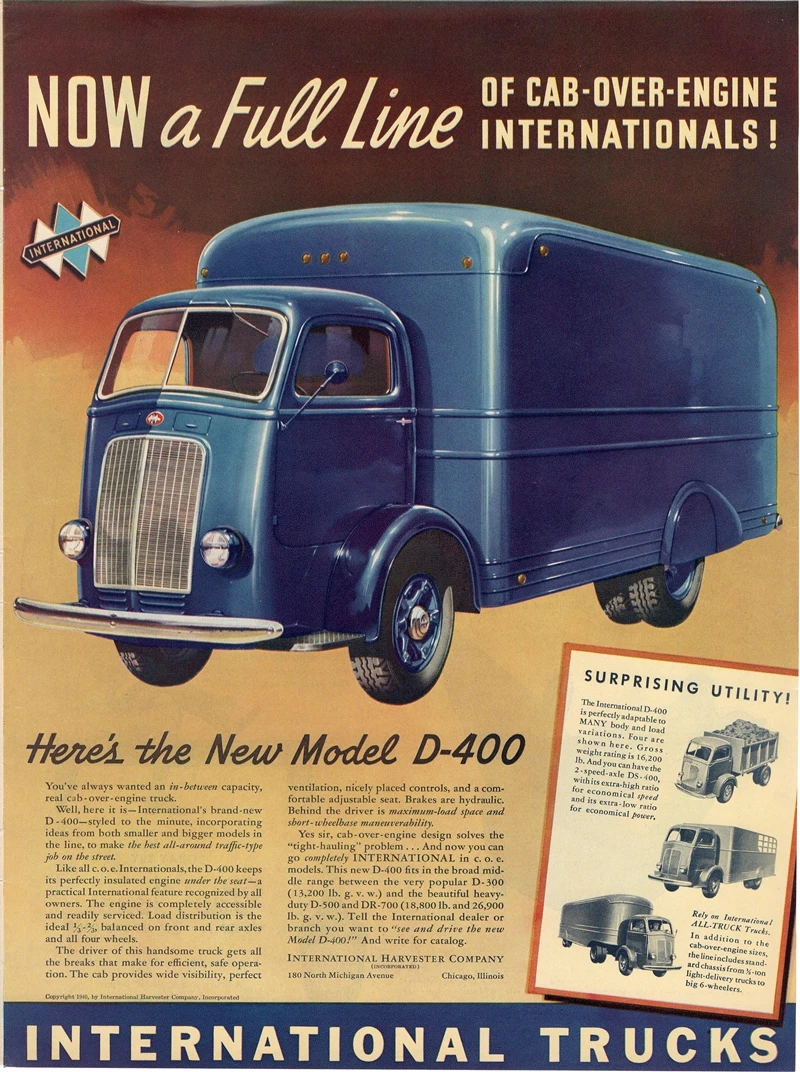
In 1921, the company introduced the popular “S” series trucks, which became very popular. In 1930, their new “A” series, stronger trucks for carrying much heavier loads and moving higher tonnages over long distances, was released.
During the 1930s, a time when Americans were experiencing the Great Depression, the styling of the popular International Trucks was changing. The new models were called the “C” series and successfully introduced to the public. They offered a great design with flowing lines for the front fenders, along with redesigned radiator shells, which were now slanted and had a slight V-shaped design. The slanted design windshield gave the truck models that popular aero-dynamic look which most consumers thoroughly enjoyed.
 International Truck advertisement featuring all models ,1940 (Robert Tate Collection)
International Truck advertisement featuring all models ,1940 (Robert Tate Collection)
In 1937, International Truck decided that their models needed a new and refreshing look, due to their competitors’ introduction of new designs to the truck category. The result was the introduction of the “D” series, heralded by many automotive historians as the most appealing product International Truck had offered in many years. The popular D-300 model was viewed as a very modern design by many historians.
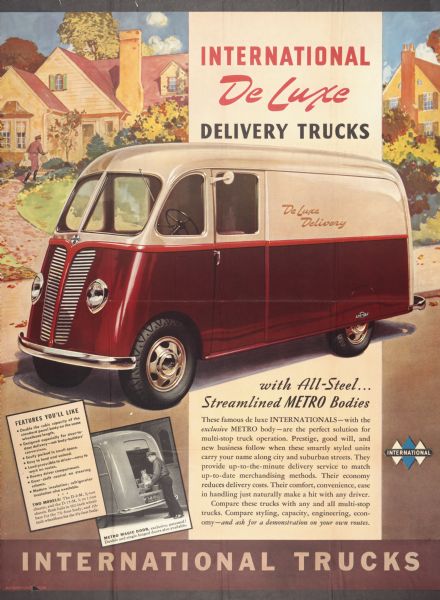 International Metro De Luxe delivery trucks ad, 1940 (Robert Tate Collection)
International Metro De Luxe delivery trucks ad, 1940 (Robert Tate Collection)
By the spring of 1941, the company introduced the “K” series, however, these models were unfortunately delayed due to World War II and the shift in production efforts. After the war ended, the K series went back into production. In 1947, the models received a revised design known as the KB series.
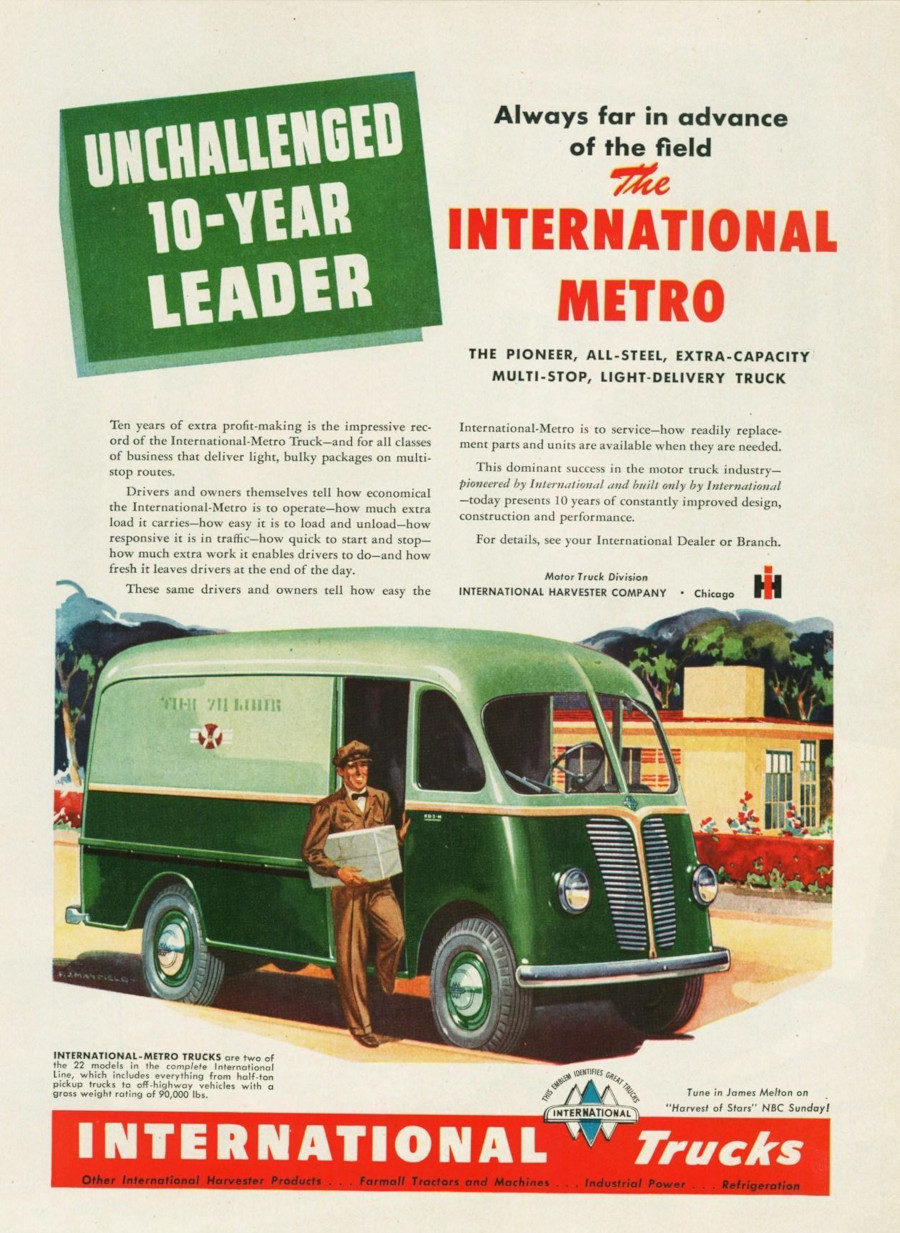 International Trucks ad, 1950s (Robert Tate Collection)
International Trucks ad, 1950s (Robert Tate Collection)
International Truck also introduced a very popular design in 1941 that would remain in the market for many years to come called the D-15-M, which was replaced by the K-3-M series. These models offered a metro look design highlighted by oval headlamp housings and sealed beam units. After the war, these models were introduced to the consumer market in 1946. They were used for delivery services for many businesses and retail stores. The trucks rode on a wheelbase of 135 inches and offered 12 feet of payload space. A four-speed transmission and 7.50 x 16 tires were also available. This line of trucks was so popular, used in fleets operated by the United State Postal Service and many other Governmental agencies.
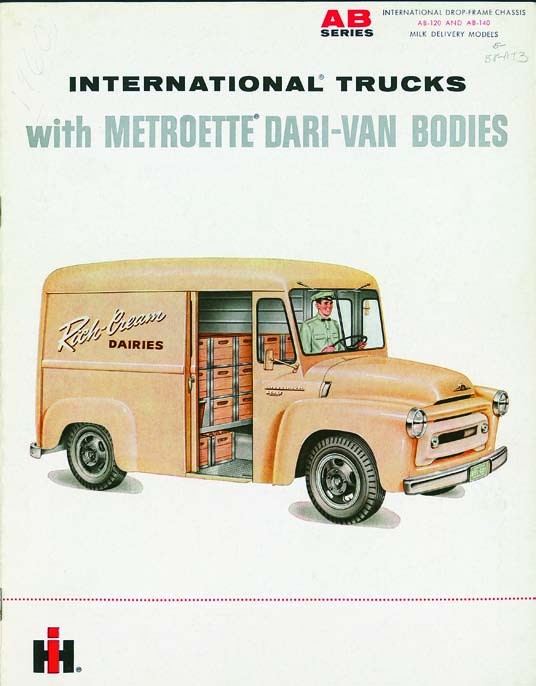 International Truck brochure, 1956 (Robert Tate Collection)
International Truck brochure, 1956 (Robert Tate Collection)
The 1950s brought exciting new changes to the International Truck line. Although the new “L” series was introduced in 1949, the models for 1950 set the tone for where the company was going. 1950 was also the year that the International Harvester Company decided to bring back the cab-over-engine models for the consumer market. The new International panel trucks were only available with the 115-inch wheelbase in both the L-110 and L-120 series.
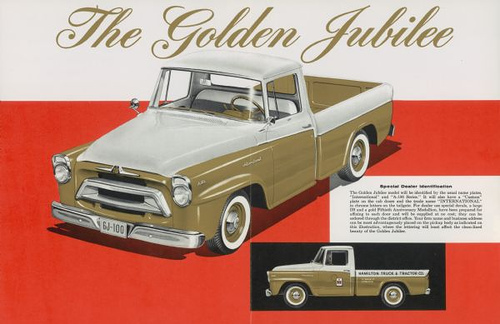 International Truck ad for 1957 anniversary series (Robert Tate Collection)
International Truck ad for 1957 anniversary series (Robert Tate Collection)
In 1957, International Harvester celebrated their 50th anniversary of making trucks. The company had sold and manufactured 2,610,441 trucks during those 50 years. They produced many great looking trucks that competed with Ford, Chrysler and General Motors. For the anniversary, a special gold and white A-100 truck was introduced called the “Golden Jubilee” Custom pickup. Another popular truck for 1957 was an all-new design called the “Travelall.“ The “Travelette,” featuring a six-man cab and a six-foot long body, was another new model that was very popular in the construction industry.
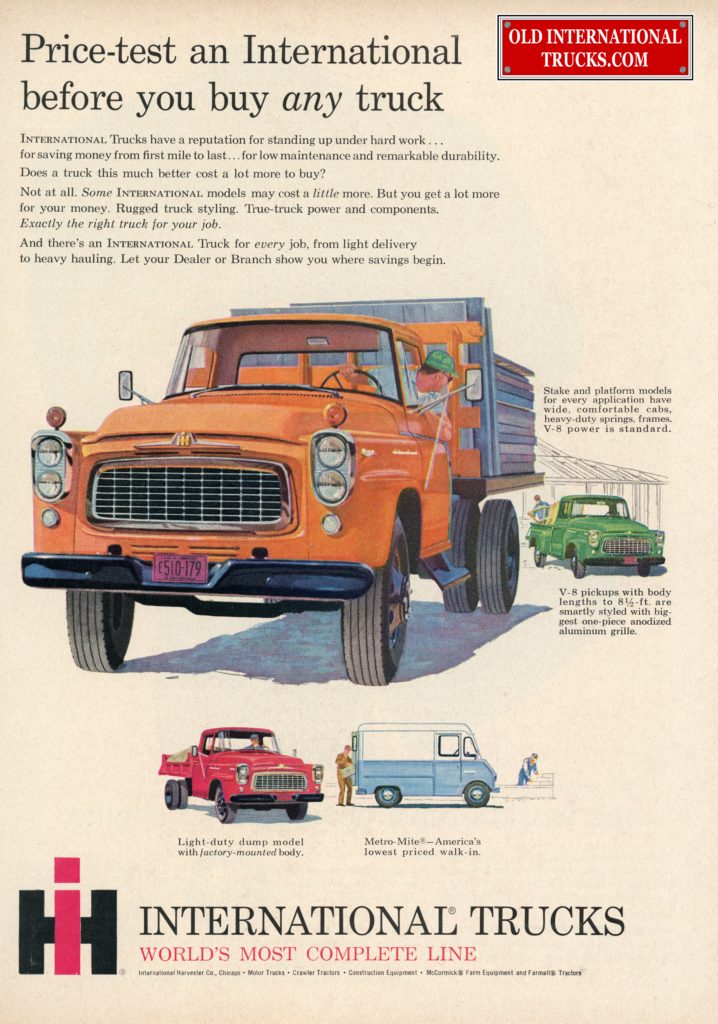 International Truck advertisement, 1957 (Robert Tate Collection)
International Truck advertisement, 1957 (Robert Tate Collection)
In conclusion, from 1929 to 1957, International Truck offered many new and exciting vehicles that were very popular and will always be a part of our industrial design history.
Finally, during this difficult time, I hope everyone stays safe and continues to stay home. Help out when needed, and please take care of yourself.
Bibliography
Crismon, Frederick W. “International Trucks.” Crestline Publishing, 1995.



